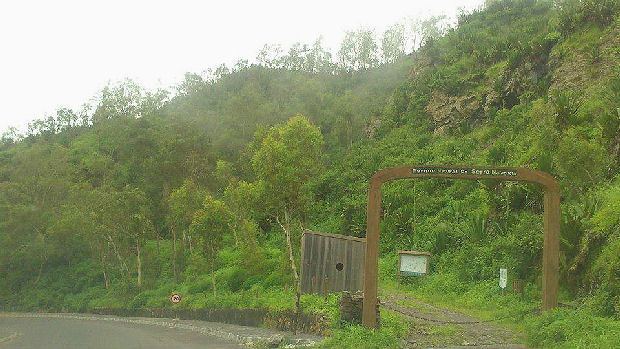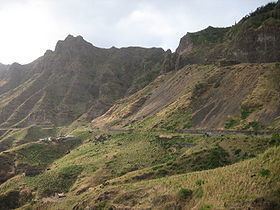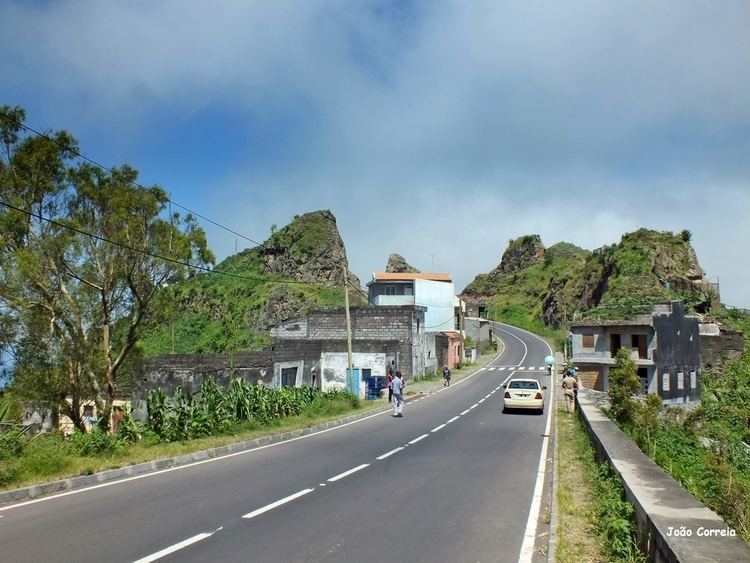Prominence 2nd in Santiago Mountain type Stratovolcano Elevation 1,064 m | Age of rock Miocene and Pliocene Easiest route climb Ages of rock Miocene, Pliocene | |
 | ||
Similar Pico da Antónia, Monte Gordo - Cape Ver, Pico do Fogo, Monte Verde - Cape Ver, Jardim Botânico | ||
Un cape verde celebrates un day by planting trees at serra malagueta national park
Serra da Malagueta is a mountain located in the northern part of the island of Santiago, Cape Verde. At 1064 m elevation, it is the second highest peak of Santiago island, after Pico da Antónia (1394 m). The mountain and its ranges forms a part of Serra da Malagueta Natural Park (Eco Serra Malagueta or Parco Natural de Serra da Malagueta), established on February 24, 2005 and covers 774 hectares. It is situated on the border of the municipalities Tarrafal, São Miguel and Santa Catarina. The mountain range dominates the north of the island stretching from Poilão in Santa Cruz up to the vicinity of Tarrafal. Its name etymology is from a plant (Capsicum), a variety of pepper, the "Malagueta pepper". It also gives its name to a nearby settlement in the westcentral portions named Serra da Malagueta or Serra Malagueta, it is also known by its short form of Serra.
Contents
- Un cape verde celebrates un day by planting trees at serra malagueta national park
- Serra da malagueta
- History
- Geology
- Flora
- Fauna
- References

The mountain area forms a source of several streams including Ribeira Principal do Santiago do Norte (the main stream) and a few nearby springs. Other sources of other streams include Ribeira de Cuba and Ribeira de São Miguel.

Serra da malagueta
History

During the Ice Age from around 15000 to 10000 BC, the elevation was under 1,200 meters, up to about 5000 BC, the elevation was over 1,100 meters.

The mountain range was best known for the communities with Rabelados movement. The largest of which lives in the settlement of Espinho Branco located northwest of Calheta de São Miguel.
Geology

Its geology is similar to that of the rest of Santiago. It is composed of basalt, basanite and basanitoids out of volcanic eruptions of nearby Pico da Antónia. Its rocks date to the miocene and pliocene periods.
Flora
The park features about 124 species of plants, of which 28 are endemic.

The flora are being threatened by invasive species from outside the park including Lantana camara (lantuna) and Furcraea foetida (Carrapato).
Nearly endangered plants includes Lantana camara (lantuna), Furcraea foetida (carrapato) and a few others. Medicinal plants in the mountain include Artemisia gorgonum (losna), Campanula jacobaea (contra bruza azul), Campylantus glaber ssp. Glaber (alecrim-brabo), Echium hypertropicum (cowtongue or cow tongue, Portuguese: lingua de vaca), Globularia amygdalifolia (mato-boton/modronho), Lavandula rotundifolia (aipo-rotcha), Satureja forbesii (erva-cidreira), Sideroxylon marginata (ironwood, English: marmulano), Tornabenea annua (funcho), Umbilicus schmidtii (Schmidt's balsam, Portuguese: balsamo), Verbascum capitis-viridis (sabão de feiticeira). Other that uses for food include Sonchus daltonii (king's heart, Portuguese: coroa de rei) and Euphorbia tuckeyana (tortolho). Plants that are threatened include Conyza feae (losna-brabo), Conyza pannosa (taba) and Limonium lobinii (carqueja de Santiago).
Fauna
The park features 19 species of birds, eight are endangered, the birds include Ardea purpurea bournei (garça vermelha de Santiago), Apus alexandri and Cape Verde sparrow (Passer iagoensis), threatened birds include Cape Verde warbler (Acrocephalis brevipennis). Six species of reptiles are founded, four are endemic including Chioninia spinalis spinalis (Portuguese: lagartixa pintada), Chioninia vaillanti (Vaillant's skink, Portuguese: lagarto) and Tarentola rudis rudis, Bufo regularis, the only amphibian species in the mountain and the park and an introduced species.
